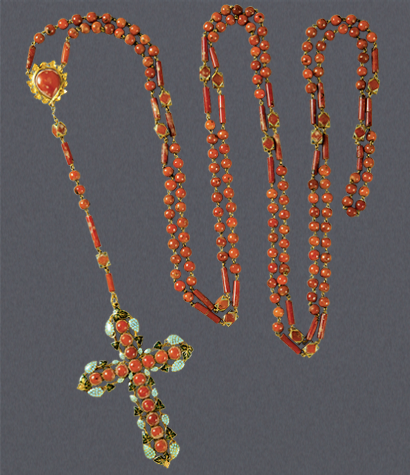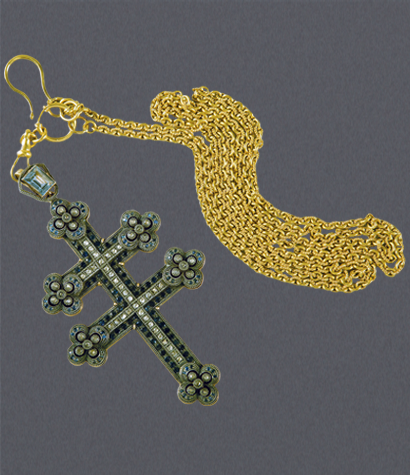
The early rosary was a simple cord tied with knots, a mnemonic device to help count the recited prayers for those who could not read. Over time, it evolved into a piece of real jewellery, made of precious metals and stones, arranged into groups of Ave Marias and Paternosters that alternated to a determined rhythm. This rosary, of gold, coral and enamel, is a beautiful example of the Indian jeweller’s art.
Belonging once to Celisa Quadros, as the inscription indicates, it consists of a fine gold chain threaded with the traditional one-hundred-and-fifty Ave Marias and sixteen Paternosters, separated by short rods, all of coral and gold. The coral Salve Regina (‘Hail, Holy Queen!’) is teardrop-shaped, and surrounded by symbolic gold vine leaves. The pendant Latin cross is wrought with great delicacy, and edged with symbolic clusters of grapes in light-blue and gold enamel alternating with dark-green and gold enamel vine leaves, alluding to the blood of Christ. The cross itself is made up of large coral beads set in gold.
PUBLICATIONS
Museum of Christian Art, Convent of Santa Monica, Goa, India, Calouste Gulbenkian Foundation, Lisbon, 2011.






